
A | B | C | D | E | F | G | H | CH | I | J | K | L | M | N | O | P | Q | R | S | T | U | V | W | X | Y | Z | 0 | 1 | 2 | 3 | 4 | 5 | 6 | 7 | 8 | 9
| Shaw Prize | |
|---|---|
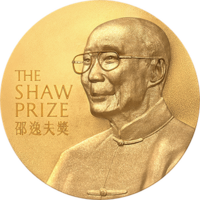 The obverse of the Shaw Prize medal | |
| Awarded for | Outstanding contributions in astronomy, life science and medicine, and mathematical sciences |
| Reward(s) | USD$1.2 million |
| First awarded | 2004 |
| Website | www |
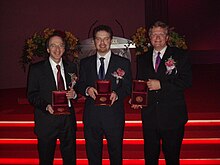
The Shaw Prize refers to three annual awards presented by the Shaw Prize Foundation in the fields of astronomy, medicine and life sciences, and mathematical sciences. Established in 2002 in Hong Kong[1] by Hong Kong entertainment mogul and philanthropist Run Run Shaw (邵逸夫),[2] the awards honour "individuals who are currently active in their respective fields and who have recently achieved distinguished and significant advances, who have made outstanding contributions in academic and scientific research or applications, or who in other domains have achieved excellence."[3] The prize has been described as the "Nobel of the East".[4][5][6][7]
Award
The prize consists of three awards in the fields of astronomy, life science and medicine, and mathematical sciences; it is not awarded posthumously. Nominations are submitted by invited individuals beginning each year in September. Winners are announced in the summer and receive the award at a ceremony in early autumn. Each award consists of a gold medal, a certificate and USD$1.2 million (USD$1 million before 2015). The front of the medal bears a portrait of Shaw and the name of the prize in English and Traditional Chinese characters; the back bears the year, category, laureate's name and a quotation from the Chinese philosopher Xunzi "制天命而用之" (translated to English as "Grasp the law of nature and make use of it").[8]
As of 2022, there have been 99 Shaw Laureates.[9] 16 Nobel laureates - Jules A. Hoffmann, Bruce Beutler, Saul Perlmutter, Adam Riess, Shinya Yamanaka, Robert Lefkowitz, Brian Schmidt, Jeffrey C. Hall, Michael Rosbash, Michael W. Young, Kip Thorne, Rainer Weiss, Jim Peebles, Michel Mayor, Reinhard Genzel, and David Julius - are Shaw Laureates. The inaugural laureate of the Shaw Prize in Astronomy was Jim Peebles, honored for his contributions to cosmology. Two inaugural prizes were awarded for the Shaw Prize in Life Science and Medicine: Stanley Norman Cohen, Herbert Boyer and Yuet Wai Kan jointly won one of them for their research in DNA while physiologist Richard Doll won the other for his contribution to cancer epidemiology. Shiing-Shen Chern was awarded the inaugural Shaw Prize in Mathematical Sciences for his work on differential geometry.
Shaw Laureates
Astronomy
| Year | Portrait | Laureate | Country | Rationale |
|---|---|---|---|---|
| 2004 | 
|
P. James E. Peebles | For his groundbreaking contribution to cosmology. He laid the foundations for almost all modern investigations in cosmology, both theoretical and observational, transforming a highly speculative field into a precision science.[10][11] | |
| 2005 | 
|
Geoffrey Marcy | For finding and characterizing the orbits and masses of the first planets around other stars, thereby revolutionizing our understanding of the processes that form planets and planetary systems.[12][13] | |
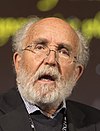
|
Michel Mayor | |||
| 2006 | 
|
Saul Perlmutter | For discovering that the expansion rate of the universe is accelerating, implying in the simplest interpretation that the energy density of space is non-vanishing even in the absence of any matter and radiation.[14][15] | |

|
Adam Riess | |||

|
Brian Schmidt | |||
| 2007 | 
|
Peter Goldreich | In recognition of his lifetime achievements in theoretical astrophysics and planetary sciences.[16][17] | |
| 2008 | 
|
Reinhard Genzel | In recognition of his outstanding contributions in demonstrating that the Milky Way contains a supermassive black hole at its centre.[18][19] | |
| 2009 | 
|
Frank H. Shu (徐遐生) | In recognition of his outstanding life-time contributions in theoretical astronomy.[20][21] | |
| 2010 | 
|
Charles L. Bennett | For their leadership of the Wilkinson Microwave Anisotropy Probe (WMAP) experiment, which has enabled precise determinations of the fundamental cosmological parameters, including the geometry, age and composition of the universe.[22][23] | |

|
Lyman A. Page Jr. | |||

|
David N. Spergel | |||
| 2011 | Enrico Costa | For their leadership of space missions that enabled the demonstration of the cosmological origin of gamma ray bursts, the brightest sources known in the universe.[24][25] | ||

|
Gerald J. Fishman | |||
| 2012 | 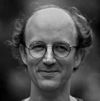
|
David Jewitt | For their discovery and characterization of trans-Neptunian bodies, an archeological treasure dating back to the formation of the Solar System and the long-sought source of short period comets.[26][27] | |

|
Jane Luu | |||
| 2013 | 
|
Steven A. Balbus | For their discovery and study of the magnetorotational instability, and for demonstrating that this instability leads to turbulence and is a viable mechanism for angular momentum transport in astrophysical accretion disks.[28][29] | |

|
John F. Hawley | |||
| 2014 | Daniel Eisenstein | For their contributions to the measurements of features in the large-scale structure of galaxies used to constrain the cosmological model including baryon acoustic oscillations and redshift-space distortions.[30][31] | ||
| Shaun Cole | ||||

|
John A. Peacock | |||
| 2015 | 
|
William J. Borucki | For his conceiving and leading the Kepler Mission, which greatly advanced knowledge of both extrasolar planetary systems and stellar interiors.[32][33] | |
| 2016 | 
|
Ronald W. P. Drever | For conceiving and designing the Laser Interferometer Gravitational-Wave Observatory (LIGO), whose recent direct detection of gravitational waves opens a new window in astronomy, with the first remarkable discovery being the merger of a pair of stellar mass black holes.[34][35] | |

|
Kip S. Thorne | |||

|
Rainer Weiss | |||
| 2017 | 
|
Simon D. M. White | For his contributions to understanding structure formation in the Universe. With powerful numerical simulations he has shown how small density fluctuations in the early Universe develop into galaxies and other nonlinear structures, strongly supporting a cosmology with a flat geometry, and dominated by dark matter and a cosmological constant.[36][37] | |
| 2018 | Jean-Loup Puget | For his contributions to astronomy in the infrared to submillimetre spectral range. He detected the cosmic far-infrared background from past star-forming galaxies, and proposed aromatic hydrocarbon molecules as a constituent of interstellar matter. With the Planck space mission, he has dramatically advanced our knowledge of cosmology in the presence of interstellar matter foregrounds.[38][39] | ||
| 2019 | 
|
Edward C. Stone | For his leadership in the Voyager project, which has, over the past four decades, transformed our understanding of the four giant planets and the outer Solar System, and has now begun to explore interstellar space.[40][41] | |
| 2020 | 
|
Roger D. Blandford | For his foundational contributions to theoretical astrophysics, especially concerning the fundamental understanding of active galactic nuclei, the formation and collimation of relativistic jets, the energy extraction mechanism from black holes, and the acceleration of particles in shocks and their relevant radiation mechanisms.[42][43] | |
| 2021 | 
|
Victoria M. Kaspi | For their contributions to our understanding of magnetars, a class of highly magnetized neutron stars that are linked to a wide range of spectacular, transient astrophysical phenomena. Through the development of new and precise observational techniques, they confirmed the existence of neutron stars with ultra-strong magnetic fields and characterized their physical properties. Their work has established magnetars as a new and important class of astrophysical objects.[44][45] | |

|
Chryssa Kouveliotou | |||
| 2022 | 
|
Lennart Lindegren | For their lifetime contributions to space astrometry, and in particular for their role in the conception and design of the European Space Agency’s Hipparcos and Gaia missions.[46][47] | |
| Michael Perryman | ||||
| 2023 | 
|
Matthew Bailes | For the discovery of fast radio bursts (FRBs).[48] | |

|
Duncan Lorimer | |||
| Maura McLaughlin |
Life science and medicine
| Year | Portrait | Laureate | Country | Rationale |
|---|---|---|---|---|
| 2004 | 
|
Stanley N. Cohen | For their discoveries on DNA cloning and genetic engineering.[11][49] | |

|
Herbert W. Boyer | |||
| Yuet-Wai Kan | For his discoveries on DNA polymorphism and its influence on human genetics.[11][49] | |||
| 2004 | 
|
Richard Doll | For his contribution to modern cancer epidemiology.[11][49] | |
| 2005 | Michael Berridge | For his discoveries on calcium signalling in the regulation of cellular activity.[50][51] | ||
| 2006 | Xiaodong Wang | For his discovery of the biochemical basis of programmed cell death, a vital process that balances cell birth and defends against cancer.[52][53] | ||
| 2007 | 
|
Robert Lefkowitz | For his relentless elucidation of the major receptor system that mediates the response of cells and organs to drugs and hormones.[54][55] | |
| 2008 | Keith H. S. Campbell | For their recent pivotal innovations in reversing the process of cell differentiation in mammals, a phenomenon which advances our knowledge of developmental biology and holds great promise for the treatment of human diseases and improvements in agriculture practices.[56][57] | ||
| Ian Wilmut | ||||

|
Shinya Yamanaka | |||
| 2009 | Douglas L. Coleman | For their work leading to the discovery of leptin, a hormone that regulates food intake and body weight.[58][59] | ||

|
Jeffrey M. Friedman | |||
| 2010 | 
|
David Julius | For his seminal discoveries of molecular mechanisms by which the skin senses painful stimuli and temperature and produces pain hypersensitivity.[60][61] | |
| 2011 | 
|
Jules A. Hoffmann | For their discovery of the molecular mechanism of innate immunity, the first line of defense against pathogens.[62][63] | |
| Ruslan M. Medzhitov | ||||

|
Bruce A. Beutler | |||
| 2012 | Franz-Ulrich Hartl | For their contributions to the understanding of the molecular mechanism of protein folding. Proper protein folding is essential for many cellular functions.[64][65] | ||

|
Arthur L. Horwich | |||
| 2013 | 
|
Jeffrey C. Hall | For their discovery of molecular mechanisms underlying circadian rhythms.[66][67] | |

|
Michael Rosbash | |||

|
Michael W. Young | |||
| 2014 | 
|
Kazutoshi Mori | For their discovery of the Unfolded Protein Response of the endoplasmic reticulum, a cell signalling pathway that controls organelle homeostasis and quality of protein export in eukaryotic cells.[68][69] | |

|
Peter Walter | |||
| 2015 | 
|
Bonnie L. Bassler | For elucidating the molecular mechanism of quorum sensing, a process whereby bacteria communicate with each other and which offers innovative ways to interfere with bacterial pathogens or to modulate the microbiome for health applications.[70][71] | |
| E. Peter Greenberg | ||||
| 2016 | 
|
Adrian P. Bird | For their discovery of the genes and the encoded proteins that recognize one chemical modification of the DNA of chromosomes that influences gene control as the basis of the developmental disorder Rett syndrome.[72][73] | |

|
Huda Y. Zoghbi | |||
| 2017 | 
|
Ian R. Gibbons | For their discovery of microtubule-associated motor proteins: engines that power cellular and intracellular movements essential to the growth, division, and survival of human cells.[74][75] | |

|
Ronald D. Vale | |||
| 2018 | 
|
Mary-Claire King | For her mapping the first breast cancer gene. Using mathematical modeling, King predicted and then demonstrated that breast cancer can be caused by a single gene. She mapped the gene which facilitated its cloning and has saved thousands of lives.[76][77] | |
| 2019 | Maria Jasin | For her work showing that localized double strand breaks in DNA stimulate recombination in mammalian cells. This seminal work was essential for and led directly to the tools enabling editing at specific sites in mammalian genomes.[78][79] | ||
| 2020 | 
|
Gero Miesenböck | For the development of optogenetics, a technology that has revolutionized neuroscience.[80][81] | |
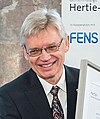
|
Peter Hegemann | |||

|
Georg Nagel | |||
| 2021 | 
|
Scott D. Emr | For the landmark discovery of the ESCRT (Endosomal Sorting Complex Required for Transport) pathway, which is essential in diverse processes involving membrane biology, including cell division, cell-surface receptor regulation, viral dissemination, and nerve axon pruning. These processes are central to life, health and disease.[82][83] | |
| 2022 | Paul A. Negulescu | For landmark discoveries of the molecular, biochemical, and functional defects underlying cystic fibrosis and the identification and development of medicines that reverse those defects and can treat most people affected by this disorder. Together, these discoveries and medicines are alleviating human suffering and saving lives.[84][85] | ||
| Michael J. Welsh | ||||
| 2023 | Patrick Cramer | For pioneering structural biology that enabled visualisation, at the level of individual atoms, of the protein machines responsible for gene transcription, one of life’s fundamental processes. They revealed the mechanism underlying each step in gene transcription, how proper gene transcription promotes health, and how dysregulation causes disease.[48] | ||

|
Eva Nogales |
Mathematical sciences
| Year | Portrait | Laureate | Country | Rationale |
|---|---|---|---|---|
| 2004 | 
|
Shiing-Shen Chern (陳省身) | For his initiation of the field of global differential geometry and his continued leadership of the field, resulting in beautiful developments that are at the centre of contemporary mathematics, with deep connections to topology, algebra and analysis, in short, to all major branches of mathematics of the last sixty years.[86][87] | |
| 2005 | 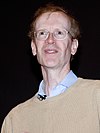
|
Andrew John Wiles | For his proof of Fermat's Last Theorem.[88][89] | |
| 2006 | 
|
David Mumford | For David Mumford's contributions to mathematics, and to the new interdisciplinary fields of pattern theory and vision research; and for Wentsun Wu's contributions to the new interdisciplinary field of mathematics mechanization.[90][91] | |

|
Wentsun Wu (吳文俊) | |||
| 2007 | 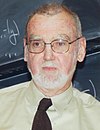
|
Robert Langlands | For initiating and developing a grand unifying vision of mathematics that connects prime numbers with symmetry.[92][93] |
